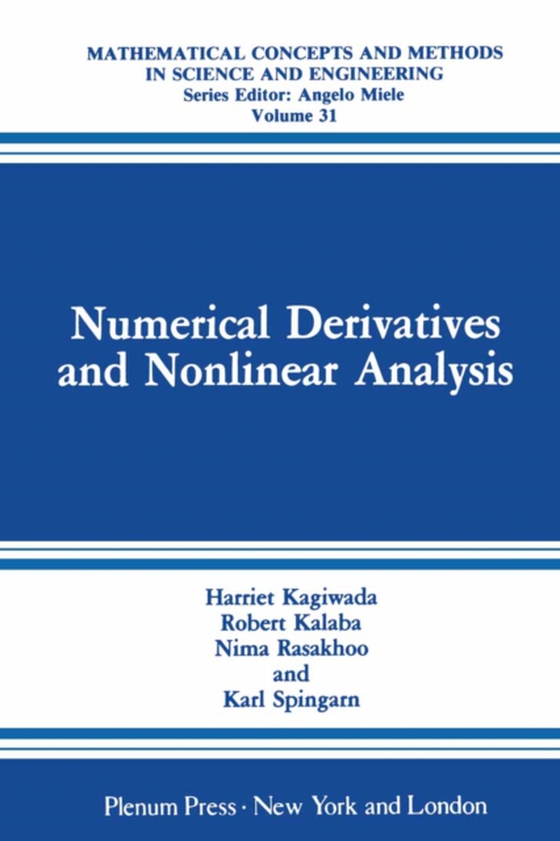
Numerical Derivatives and Nonlinear Analysis e-bog
436,85 DKK
(inkl. moms 546,06 DKK)
For many years it has been an article of faith of numerical analysts that the evaluation of derivatives of complicated functions should be avoided. Derivatives were evaluated using finite differences or, more recently, using symbolic manipulation packages. The first has the disadvantage of limited accuracy. The second has disadvantages of being expensive and requiring considerable computer memo...
E-bog
436,85 DKK
Forlag
Springer
Udgivet
8 marts 2013
Genrer
THR
Sprog
English
Format
pdf
Beskyttelse
LCP
ISBN
9781468450569
For many years it has been an article of faith of numerical analysts that the evaluation of derivatives of complicated functions should be avoided. Derivatives were evaluated using finite differences or, more recently, using symbolic manipulation packages. The first has the disadvantage of limited accuracy. The second has disadvantages of being expensive and requiring considerable computer memory. The recent developments described in this text allow the evaluation of derivatives using simple automatic derivative evaluation subroutines pro- grammed in FORTRAN or BASIC. These subroutines can even be programmed on a personal computer. The concept for the evaluation of the derivatives was originally developed by Wengert over 20 years ago. Significant im- provements have been made in Wengert's method and are utilized in this text. The purpose of this text is to familiarize computer users with a simple and practical method for obtaining the partial derivatives of complicated mathematical expressions. The text illustrates the use of automatic deriva- tive evaluation subroutines to solve a wide range of nonlinear least-squares, optimal control, system identification, two-point boundary value problems, and integral equations. The numerical values of the derivatives are evalu~ ated exactly, except for roundoff, using simple FORTRAN or BASIC sub- routines. These derivatives are derived automatically behind the scenes, from the equivalent of analytical expressions, without any effort from the user. The use of costly software packages is not required.
 Dansk
Dansk

